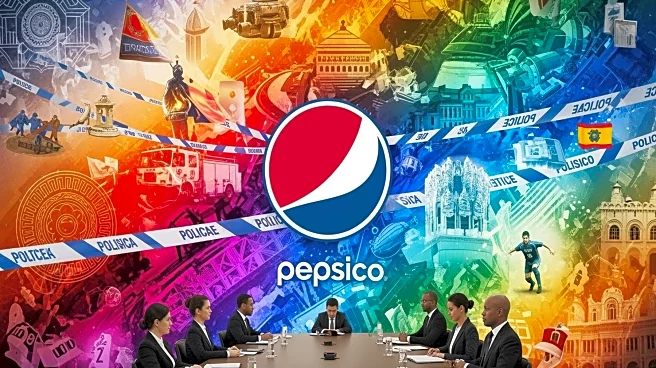What's Happening?
Fura Jóhannesdóttir, the global chief creative officer at Interbrand, is urging brands to embrace bold and human-centered design. As a judge in The Drum Awards Festival's Design category, she emphasizes
the importance of moving beyond traditional practices and creating work that stands out. Jóhannesdóttir advocates for brand experience design, which involves engaging with the C-suite about purpose and value. She believes that experience design is undervalued and that designers should have more influence on corporate boards. Her approach focuses on using AI to enhance brand communication and innovation, while encouraging brands to take risks and differentiate themselves.
Why It's Important?
Jóhannesdóttir's emphasis on bold design and brand experience highlights a shift in the industry towards more meaningful and impactful branding strategies. By advocating for risk-taking and differentiation, she challenges brands to move away from conformity and embrace creativity. Her focus on experience design underscores the growing importance of creating holistic brand experiences that resonate with consumers on an emotional level. This approach can lead to increased brand loyalty and business growth, as companies that successfully differentiate themselves are more likely to capture consumer attention and drive engagement.
What's Next?
As brands begin to adopt Jóhannesdóttir's principles, we may see a rise in innovative and emotionally engaging brand experiences. Companies could start prioritizing experience design in their strategic planning, leading to more creative collaborations and partnerships. The integration of AI in brand communication may become more prevalent, allowing for personalized and efficient interactions with consumers. As designers gain more influence on corporate boards, we may witness a shift towards more design-driven business strategies, fostering a culture of creativity and innovation within organizations.
Beyond the Headlines
Jóhannesdóttir's advocacy for bold design raises important questions about the role of creativity in business and the potential for design to drive social change. By encouraging brands to take risks and push boundaries, she challenges the industry to rethink traditional approaches and explore new possibilities. This focus on differentiation and innovation may lead to discussions on the ethical implications of design, including issues of inclusivity, representation, and sustainability. As brands strive to create meaningful experiences, they may also consider the broader impact of their design choices on society and the environment.











